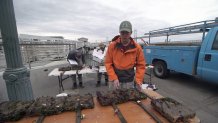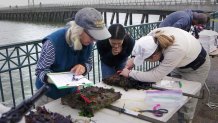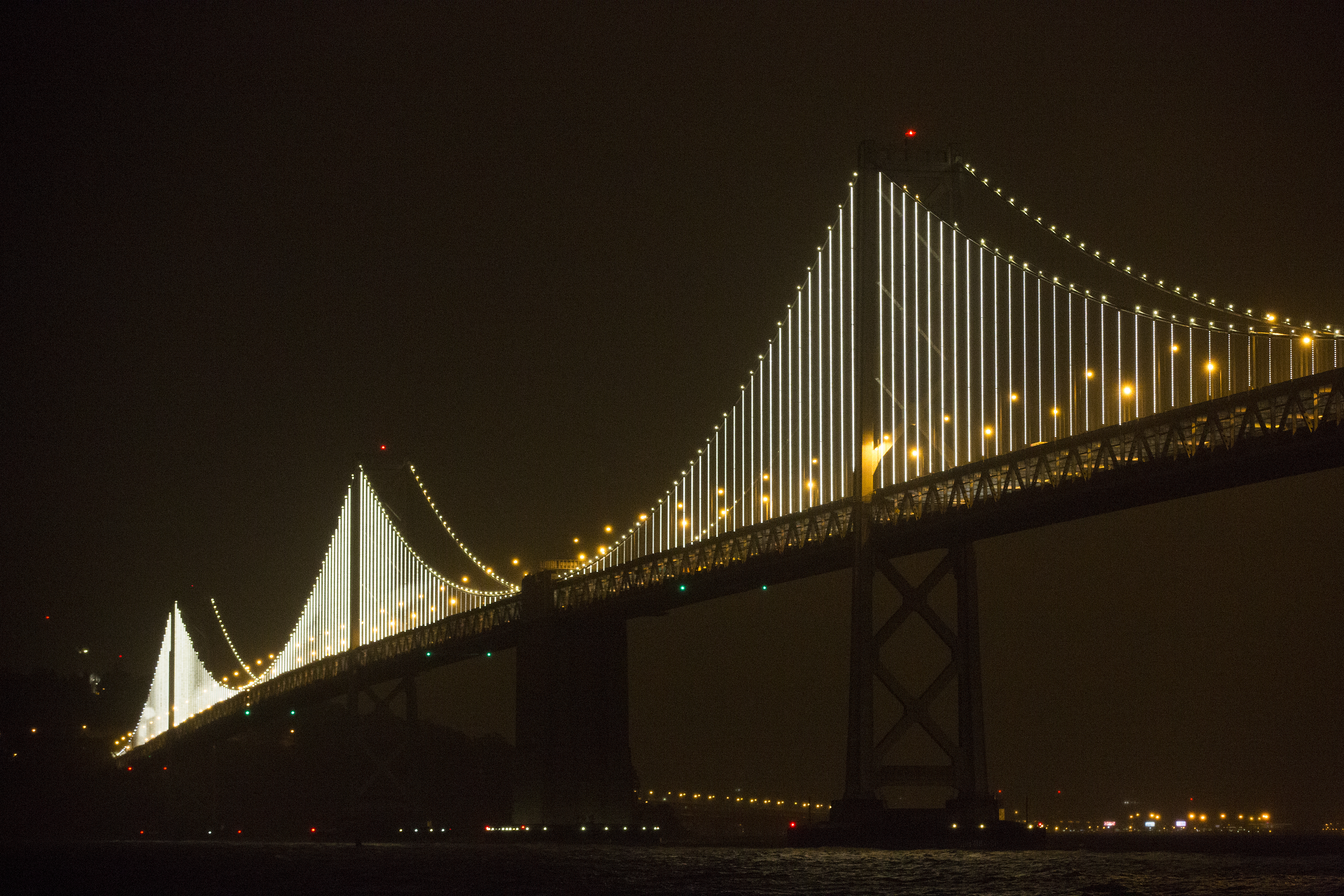As San Francisco plans the rebuild its decaying seawall under threat from earthquakes and rising sea levels, a team of researchers wants to make sure the new barrier takes into account the sea creatures who make their home in the bay.
The Tiburon-based Smithsonian Environmental Research Center is conducting a study at the existing San Francisco seawall to determine whether different textures might make better habitat for creatures like seaweed and other creatures who move in.
The group installed a series of concrete tiles just below the water’s edge at several locations along the waterfront — some with a smooth surface mimicking a traditional sea wall; some with a rough surface of nooks and crannies — and a third made with a unique concrete mix designed to support marine growth.
“By adding things like additional texture or perhaps treating the surface,” said ecologist Andrew Chang, project lead for the Smithsonian study, ”we can make it a more hospitable place for plants and animals to settle and live.”
Get a weekly recap of the latest San Francisco Bay Area housing news. Sign up for NBC Bay Area’s Housing Deconstructed newsletter.
Three times a year the team visits the site to inspect the progress. Divers from the Port of San Francisco pull the tiles from the water and place them on plastic folding tables where the researchers can take a closer look. The ecologists catalog all the creatures living on the tiles and photograph them.

“We’re collecting data three times a year,” said ecologist Chela Zabin, “to look at what has grown on them and comparing that across different tidal elevations and different material types.”
Local
The group has logged creatures like crabs, scallops and a number of varieties of seaweed. A particular interest is the occasional discovery of the tiny Olympia Oysters which are native to the bay.
“It’s something that has been a priority for a lot of management agencies,” said Zabin, “to try to bring the population back up to somewhere near what its historical levels were.”
The city will eventually replace 7.5 miles of sea wall due to the threat of climate change and rising seas. Areas just south of the Ferry Building already experience flooding regularly during high tides and occasional king tides give an even more harrowing glimpse of what’s to come.

The findings from the study will help the port design the new sea wall, giving consideration to collateral benefits for the marine species.
Climate change is already delivering higher temperatures in the bay, which has an impact on sea life. A textured sea wall surface could potentially provide those creatures shelter on those extremely hot days, especially in heat waves during low tides.
“It is pretty clear that the textured tiles have more species,” said Zabin looking down at a tile covered in the greenery of aquatic life, “more different organisms can live on the textured tiles compared to the flat tiles.”
The seaweeds that cling to the sea walls are also important because they’re safer places for herring to lay eggs — as opposed to the creosote treated pilings which studies have shown can be toxic to the eggs.
It all adds up to the potential to do more good than harm as climate change impacts humans — and their sea dwelling counterparts.
“This may be a way to mitigate climate change for some of these marine species,” said Zabin.



